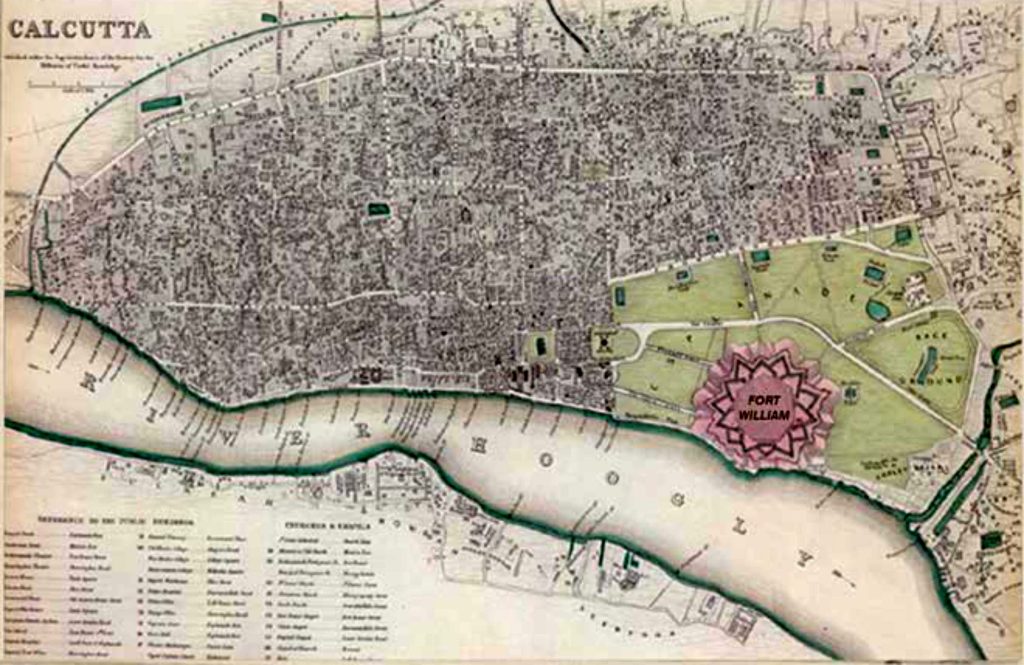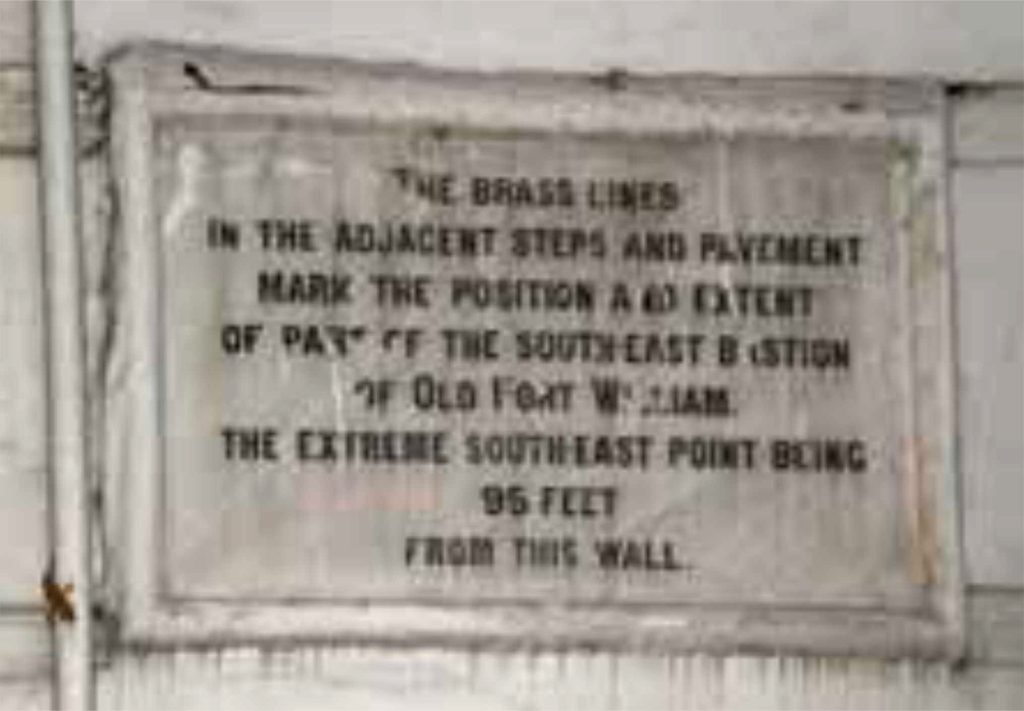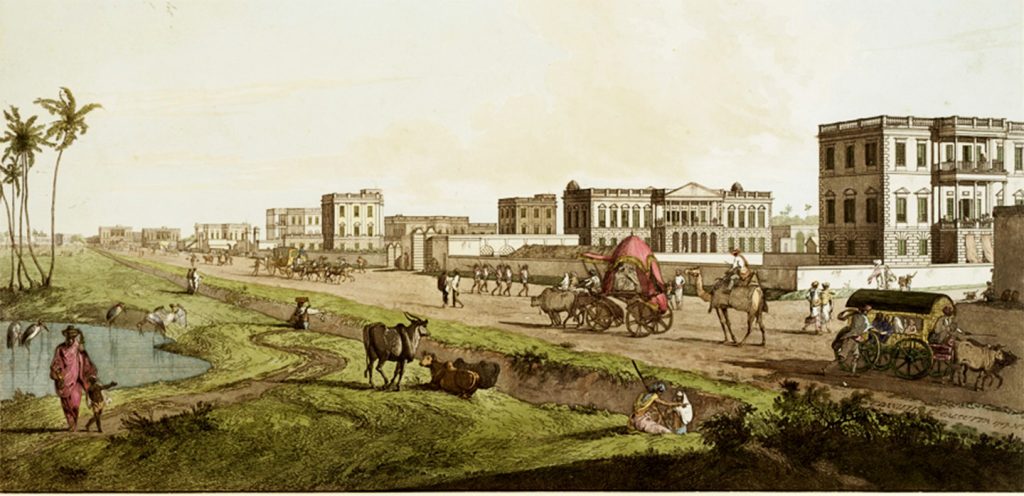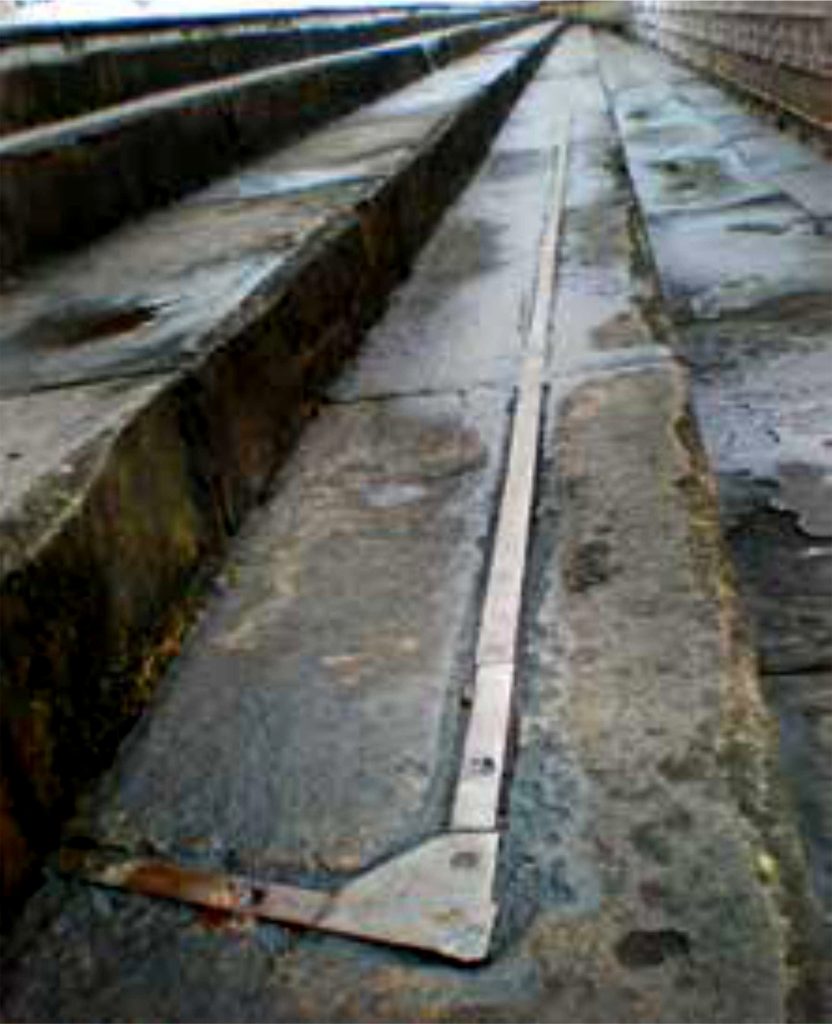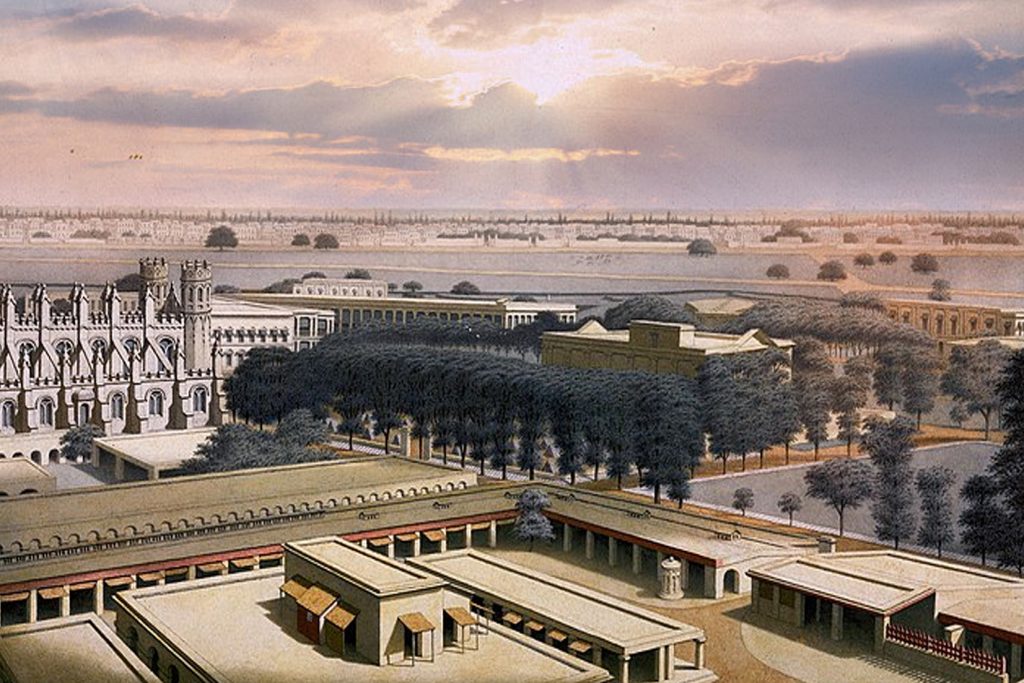Old Fort William Calcutta’s First Fort
Anindita Mazumder
The old Fort William, one of the first structures built by the British in Calcutta had a humble beginning and probably was an apt symbol of the Empire in its early days – built almost as an afterthought, left defenceless and tottering, vanquished and then abandoned altogether in humiliation and for a new order of things.
The East India Company’s factory was on the river side, at the Tank Square, later called Dalhousie Square and neither the Governor’s House (not the present Raj Bhavan) nor the warehouses were fortified. In 1696, Sobha Singh, a petty zemindar rebelled against his superior and attacked Burdwan; anarchy followed, trade suffered. The foreign traders were then allowed by the Nawab to fortify their assets. Gladly, the Dutch did so and the English followed and fortified it on August 20, 1700. The fort was named after the reigning monarch William III.
It was not much of a fort as it was shaped like an irregular tetragon. According to HE Busteed, the building which was “of brickwork and strongly cemented” lay near the riverbank about halfway between the northern and southern extremes of the company’s territory. Its east-west walls were longer than north-south, the two latter sides being of unequal length. It had four bastions, built gradually over the years; the outer walls were barely 4 feet thick and 18 feet high. The terraces were merely roofs of the storerooms and chambers below. There were large windows on the outer walls for the ventilation of the rooms contiguous to it. A little less than half of the fort was opposite the Great Tank or Lal Dighi and the park. The main entrance stood projected from the eastern wall and had guns and the “avenue leading towards Eastward”, called the Great Bungalow Road that led towards Dalhousie Square north and farther to Lal Bazaar. There was a line of canons mounted on the masonry facing the riverside. Houses of other Englishmen jostled and could impede the defence of the fort and a church stood nearby. In fact, while building the new fort at Gobindopore, the English kept in mind the havoc caused by the Nawab’s forces due to the houses that stood near the fort, endangering its defence. They ensured the new fort was placed at the centre of a large open ground – the Maidan which turned out to be the lungs of the concrete city.
The Marhatta ditch was dug in 1742 to protect the English settlement from the raiders but was never completed. Meanwhile, after receiving the zemindary which once belonged to Sabarna Roy Choudhurys because of the firman of the Mughal Emperor, the Company found the means to defray the expenses of the small garrison required to be stationed at the fort. The first Writers’ Buildings in the first half of 18th century were housed in the Long Row within the fort, used as quarters by the young gentlemen in the company’s service. The northern part of the fort contained the magazine, armoury, the dispensary and various shops and stores. The northern river gate was used by the young Nawab to enter the fort after it fell. The south section had two gates, one leading to the river and steps and landing stage, used by the Governor Roger Drake to escape in a boat before the fort fell to the Nawab’s forces, the other opening into the great avenue to the eastward (Dalhousie Square, North). In the middle of the south section of the Fort was the Governor’s House – the best and most regular piece of architecture, according to the much travelled Alexander Hamilton.
It was found that the defences of Calcutta, natural as well artificial were inadequate to prevent it being stormed. The natural defences were Hooghly and the Salt Lakes. A visitor noticed that the “Governor’s house and the Company’s stores and warehouses” were surrounded by a high wall without moat, with bastions planted with a few canons and a battery of 30 guns facing the river and a feeble garrison. He concluded, it may survive a country force but would stand no chance against a European force. Moreover, in spite of remonstrance by the Court of directors and local military officers the fort’s defences were allowed to fall into a state of disrepair. Adding to the misery, new godowns came up in between preventing the canons from being effective in case of an attack. Hence, it did not even withstand the storming of Nawab’s forces.
The siege of Calcutta and the Black Hole tragedy are oft-repeated tales and to cut a long story short, the new Nawab, Siraj-ud-Daula attacked Calcutta after the British ignored his orders against repairing the fort, anticipating a clash with the French ensconced in Chandannagore. As the Nawab’s forces advanced, the British first tried to placate him by accepting all his demands, then urged the Dutch and French to help but they turned down the pleas. Reinforcement was sought from Madras.
At the end Governor Drake abandoned the fort while among those who remained behind in the garrison there were hardly a handful of Englishmen who had any experience in warfare. The rest were mostly Eurasians who held the musket for the first time. The siege was over even before it began and the fort fell to Siraj’s forces on June 20, 1756. Siraj ordered the prisoners to be held for the night and the guards pushed them in a small room with only single window leading to the Black Hole tragedy. There are various accounts of the tragedy but Holwell who chronicled it, had built a monument in the memory of those who perished, at the corner of the Writers’ Buildings and the site occupied by the GPO. The bodies had been thrown at that very spot, in the ditch, the next morning. However, it fell into disrepair after being struck by lighting and its removal was ordered by the Marquis of Hastings after a few years.
The fort had been built on the highest piece of land and the plot is now occupied by General Post Office, Calcutta Collectorate, the Custom House (now RBI Building) and office of Eastern Railway. From 1766 what remained of the first fort was used as Customs House with an adjoining landing stage to receive arriving goods and passengers. The present General Post Office was erected in
1856 on the partial ruins of old Fort William. Later, under the directions of Lord Curzon the outline of the old fort was marked with brass lines in the stone and a tablet was put up to indicate “the position and extent of south curtain of Old Fort William” on the walls of GPO. The brass lines are hardly visible today and most people who cross that busy stretch are unaware of the past history. At the location of the tiny guard room which served as the “Black Hole” Curzon had put up a marble plaque which said: “The marble pavement below this spot was placed here by Lord Curzon, viceroy and governor general of India in 1901 to mark the site of the prison in old fort William known as the black hole in which 146 British inhabitants of Calcutta were confined on the night of the 20th June; 1756 and from which only 23 came out alive.” The Holwell’s monument has since disappeared, abandoned at the back of the St. John’s courtyard after an agitation by Netaji Subhas Chandra Bose. Little remains of the efforts of Curzon to preserve the past and the railings and tablets are mostly gone except the brass lines on the staircase and a tablet on the walls of GPO.
While in possession of the Nawab, some of the inner buildings of the fort were demolished and a mosque was erected. But after the English recovered their lost ground, it returned to original use. In 1758, Company’s goods were removed and given up to the army for its barracks. In 1760, the space between the East Gate and black hole was used as a temporary chapel before St. John’s Church was built. By 1767 all traces of military were removed to convert the fort into a Custom House. The masonry was strong enough to ward off pickaxes and crowbars and the workers had to resort to the use of gun powder.
The foundation stone of the Old Custom House was laid by Lord Hastings on February 12, 1819. It was a substantially wide two storied building erected on the site of the old fort between Calcutta Collectorate and Eastern India Railway House. The iron gate of the Custom House faced Clive Street and East India Railway Company was situated to its northern side before a new one was built at Strand Road and the office of Reserve Bank of India came up at the same spot. “Finally, in 1868 the opening of the GPO banished out of sight and mind for nearly thirty years all memories of the Old Fort and of the tragedy of suffering and humiliation which it was its fate to witness,” wrote HEA Cotton. The new, strongly built Fort William with the Union Jack fluttering atop became the new symbol of British ascendancy over India and further helped the English to obliterate the shameful saga of the fall of the fort and the humiliation of defeat.


